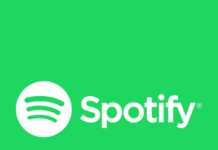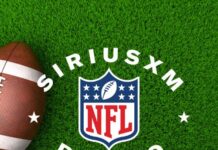
(By Bob McCurdy) In spite of the tremendous growth of the IoT (Internet of Things) and digital media’s data tsunami as a result of programmatic and the ever-increasing sophistication of algorithms, we remain largely emotional, relationship hungry, and companionship focused beings who are considerably more Kirk-like than Spock-like. This is one of the major reasons why AM/FM radio continues to play an important role in our daily lives.
Even as we approach the third decade of the 21st century, there continues to be something extremely appealing about sharing the same moment in time with another living, breathing human being. In a society where the feelings of isolation continue to accelerate due to technology’s impact, radio is a welcomed and instant “companionship” machine.
Today’s consumer and the consumer of 75 years ago have similar wants, desires, and needs, and while digital has introduced more efficient communication vehicles, they fundamentally accomplish much the same thing and largely serve much the same purpose, i.e. social media is “word-of-mouth” on a larger scale.
When it comes to advertising and marketing, the four “W’s,” as in “who,” “what,” “where,” “when,” will always play a key role when it comes to evaluating media options. Radio more than holds its own here.
“Who”: Who listens to AM/FM radio? Just about everybody, according to the just released Q3 2018 Nielsen Total Audience Report. Men, women, every discrete demographic age cell, African Americans and Hispanics, all are fans of AM/FM radio. Ninety-two percent of adults, 91% of Millennials and even 87% of teens, tune to AM/FM radio each week. Want a rough monthly reach figure? Increase these stats 5-6 points. Daily listenership? According to Share-of-Ear data, over 70% of all adults tune in each day. The report also showed that adults who tune to radio, listen for close to two hours/day, with Millennials tuning in over 90 minutes daily. On a year-to-year basis, Q3 2018’s TSL is basically flat (down a few minutes) with Q3 2017 and flat with Q2 2018’s. An extremely impressive statistic in light of the explosion of audio options. A better question might be “who doesn’t listen to AM/FM radio?”
“What”: Radio enables an advertiser to deliver well-crafted and refined audio messages of various lengths that can be creatively configured and scheduled first-in-pod, book ends, etc. Want the message communicated by a trusted “friend”? Easy. Have a personality endorse the product or service, a powerful USP for both AM/FM radio and podcasting. Personality endorsements enable a commercial message to be delivered more personally, yet at scale.
“Where”: Radio reaches consumers in places other media can’t, often while they are a mobile and captive audience, transitioning from one life role to another. As fellow Radio Ink blogger Ronald Robinson wrote, radio is the only medium where people can be doing other things while they are enjoying the broadcasts. Try that with any other medium and accidents and charges are likely to ensue.
“When”: Studies have shown that radio excels at delivering a message when the consumer is both considering making a purchase and in a position to execute that purchase (zero moment of truth). Another “when” benefit is that radio listeners often tune in to relax or are already in a relaxed state when listening. It’s in this relaxed state that commercial messaging is less likely to be contested or challenged and allowed to soak in uncontested.
I’ll add two more “W’s”:
“Works”: Radio works. The amount of data and research to back up this claim in this heightened age of accountability has never greater. From Nielsen’s ROAS studies, the good work that the RAB and Westwood One have done, along with Analytic Owl and its ability to substantiate/quantify Web traffic lift, we are enabled to elevate client performance conversations from the anecdotal to the empirical.
“Why”: So why does AM/FM radio continue to thrive?
– It’s an intimate medium in an increasingly impersonal world. AM/FM radio affords the one-on-one experience of magazines yet is viewed as a trusted friend. The para-social relationships listeners enjoy with their favorite personalities is something that neither Google nor television can match.
– It’s an ever-present mood-selection device. How do you want to feel? Just press the appropriate button and format.
– It’s a time machine transporting us back to an exact place and time, often better than any picture or video.
– It brings comfort in a fast-paced world via personalities who’ve become an important part of our daily lives. Personalities who serve as trusted advisors, assisting us to navigate successfully through our daily lives.
-It’s a world class “connector,” connecting people with their “wider world.” Online operates more within people’s immediate social network, allowing them to stay in touch with friends and highly defined communities of interest (My World). Radio connects people with their wider network, e.g. their local community or broader community of interest (My Wider World). Each complements the other.
One more “W” is necessary. “Wins.” Advertisers win when they use radio to move their business forward. Seven compelling “W’s” why radio should be part of any advertising campaign.
Bob McCurdy is Vice President of Sales for the Beasley Media Group and can be reached at [email protected].








Quite so, Bob.
My lament over the years is that radio has been misunderstood (by radio’s ownership and manage) to the degree where the medium has been and continues to be blatantly under-utilized. This has resulted in messaging – ads and live, on-air presentations – having been bludgeoned into irrelevance.
For the vast majority of local outfits, “companionship” – a concept that is, indeed, an exclusive radio component, has, likewise, been ploughed under.
Further, as you mentioned, the capacity for radio to influence an audience’s subjective, internal experiences has no bounds.
Plus, and this is also an under-appreciated facet of radio: These audience responses can be generated for so little investment. Comparing an entertaining and influential TV or other platform depending on visuals to a poorly-crafted or even decent radio spot is almost a non sequitur.
Great stuff, Bob. That’s another tail you have centred and pinned directly on the donkey’s buttinski.